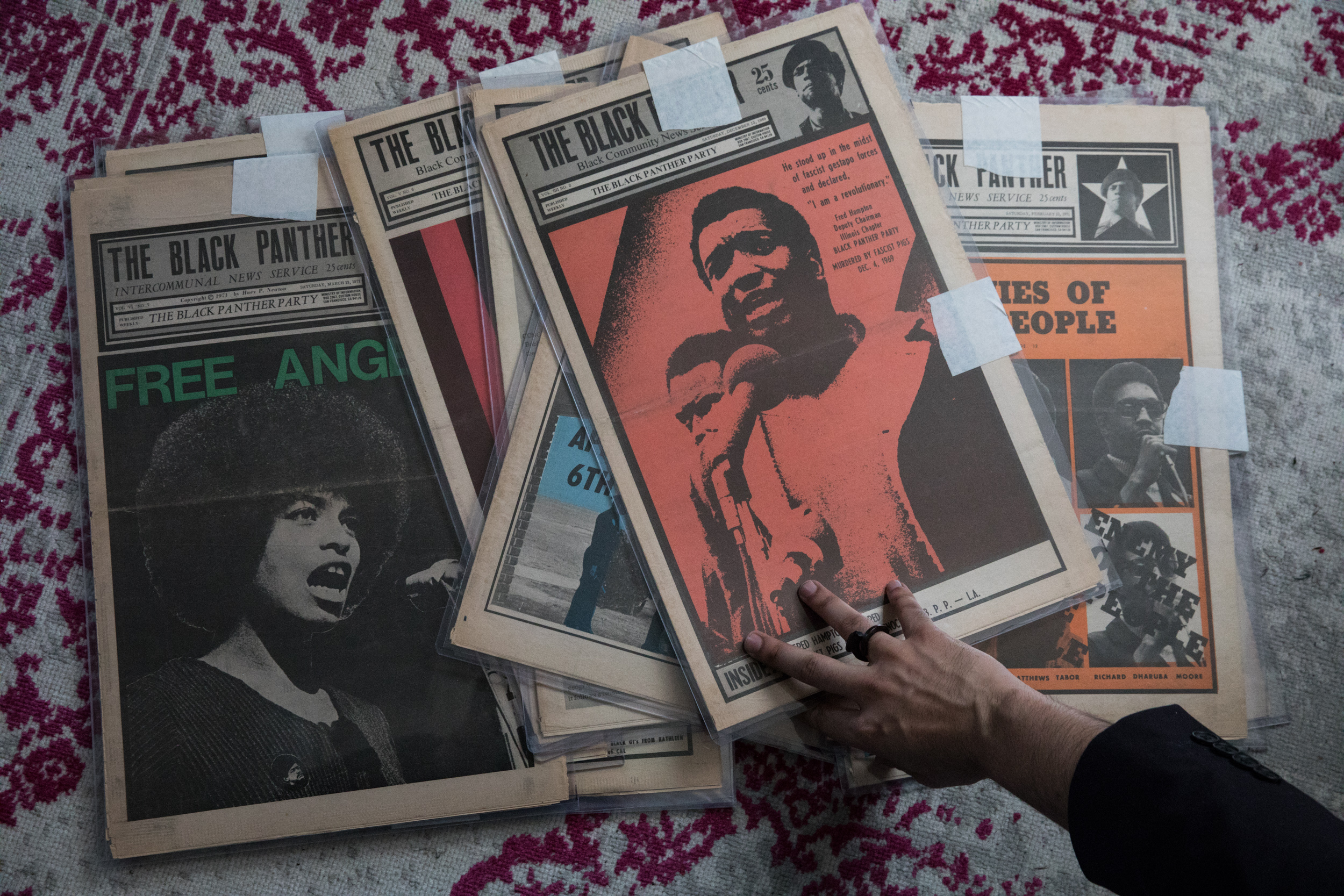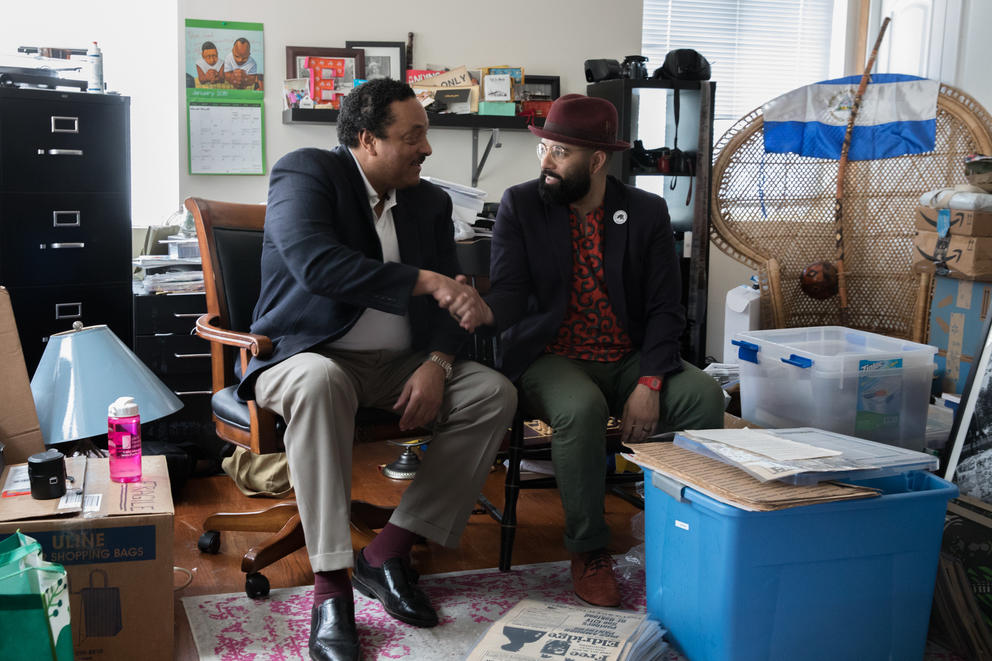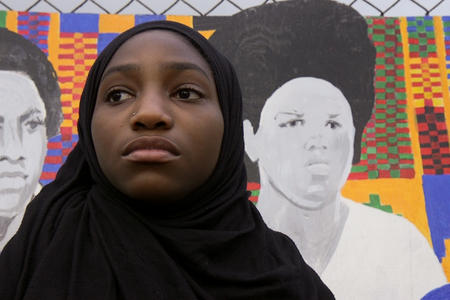“Selling papers was an everyday responsibility for almost all Panthers,” says Dixon, who with his brother Aaron co-founded the Seattle chapter of the Black Panther Party for Self Defense, the first outside of California. “It was very important to keep the information flowing out into the community,” he says, sitting inside a Beacon Hill house, surrounded by one of the most extensive archives of the Black Panther newspaper found anywhere in the country.
The newspaper collection — more than 400 copies from the late ’60s and early ’70s — is currently stored in large blue bins in an upstairs room in a Beacon Hill house. But the collection won’t be stuck in boxes for much longer. By the end of this year, the archive is slated to occupy a new satellite location of Estelita’s Library.
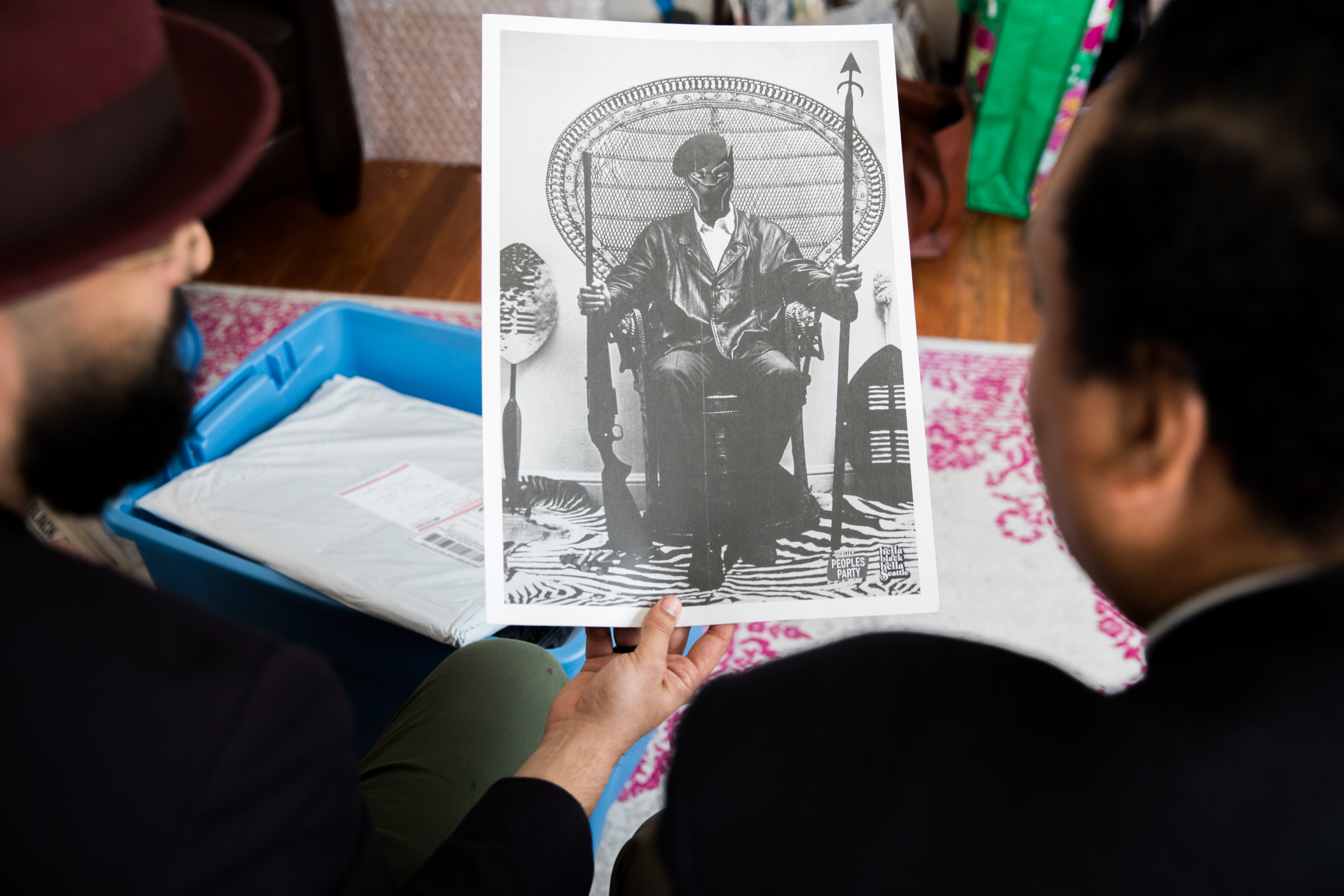
That location, near Martin Luther King Jr. Way South and South Washington Street in the Central District, will be Seattle’s first ever Tiny Cultural Space, a project of Seattle’s Office of Arts & Culture. The 200-square-foot structure will be designed and built by Sawhorse Revolution, a nonprofit that provides free architecture and carpentry education programs for South Seattle high schoolers. A rotating display of the Black Panther Party newspaper will be a centerpiece of the tiny public space that will feature movable bleacher seats, a reading nook and outside space for celebrations and parties.
The Black Panther newspaper started in Oakland in April 1967 as a four-page newsletter, fashioned DIY-style with an IBM typewriter, Elmer’s glue, blue markers and a copy machine. Its first edition announced a community meeting and featured an article about Denzil Dowell, who was killed by an officer of the Contra Costa County Sheriff's Department. Soon, it grew in size to contain dispatches from Oakland and New York, as well as Algeria and even New Zealand. It published tributes to Malcolm X, poetry, the party’s 10-point program and colorful full-page woodblock-style illustrations on the back cover, often by Emory Douglas, the party’s minister of culture.
Printed in San Francisco, the weekly paper found its way to metropolitan areas across the country. In its heyday, The Black Panther newspaper (also called The Black Panther Intercommunal or Community News Service) reached a national circulation of several hundreds of thousands. According to Black Panther Party historian and archivist Billy X Jennings, the newspaper became the most widely read Black weekly newspaper in the country between 1968 and 1971. The paper was discontinued in 1980, around the time the party’s membership had waned.
About 10 years ago, Edwin Lindo, a lecturer at the University of Washington’s School of Medicine, was rummaging through boxes at a yard sale in Oakland when he discovered a copy of the newspaper. It was “kind of beat up and bent,” he recalls, but he bought it for $7 and didn’t think much more of it. Then in 2014, on a visit to Bolerium Books in San Francisco, he purchased a second copy of the newspaper. That’s when it hit him: “There is some deep, rich history in these docs,” he remembers thinking. “I want to find a way to build a collection.”
Since then, Lindo, who opened Estelita’s Library on Beacon Hill a year ago, has spent hours and hours, at times averaging over 10 hours a week, scouring internet sites and online “yard sales” for issues of the paper. When he finds someone who sold one, he contacts them to see if they have more.
Get the latest in local arts and culture
This weekly newsletter brings arts news and cultural events straight to your inbox.
Last year, Lindo found someone willing to sell him 100 copies. He purchased them with funds raised through crowdsourcing. The couple who sold him the lot had acquired it, they claimed, from a counterintelligence operative of the Republican Party, Lindo said. The late Melvin Dixon, a former Panther and collector of the papers, sold him 75 issues. “Incredibly meaningful,” Lindo says.
After five years of collecting, Lindo has amassed 428 issues, though he says there are some duplicates. Still, that’s pretty close to the total of 505 editions that historian Jennings estimates were printed.
Because of a capricious publishing schedule (first weekly, then monthly, then every three months), it can be challenging to figure out exactly how many editions existed. At least 158 libraries across the country, including at Princeton and Stanford universities, own copies of the paper, according to Steven A. Knowlton, librarian for History and African American Studies at Princeton. Princeton owns one of the largest Black Panther newspaper collections in the United States — at 450 editions. Jennings’ private collection in Sacramento totals 451. It is available for viewing by appointment only.
That makes Lindo’s collection arguably one of the largest in the country. Stephanie Johnson-Toliver, president of the Black Heritage Society of Washington State, believes the collection is the largest in the Pacific Northwest.
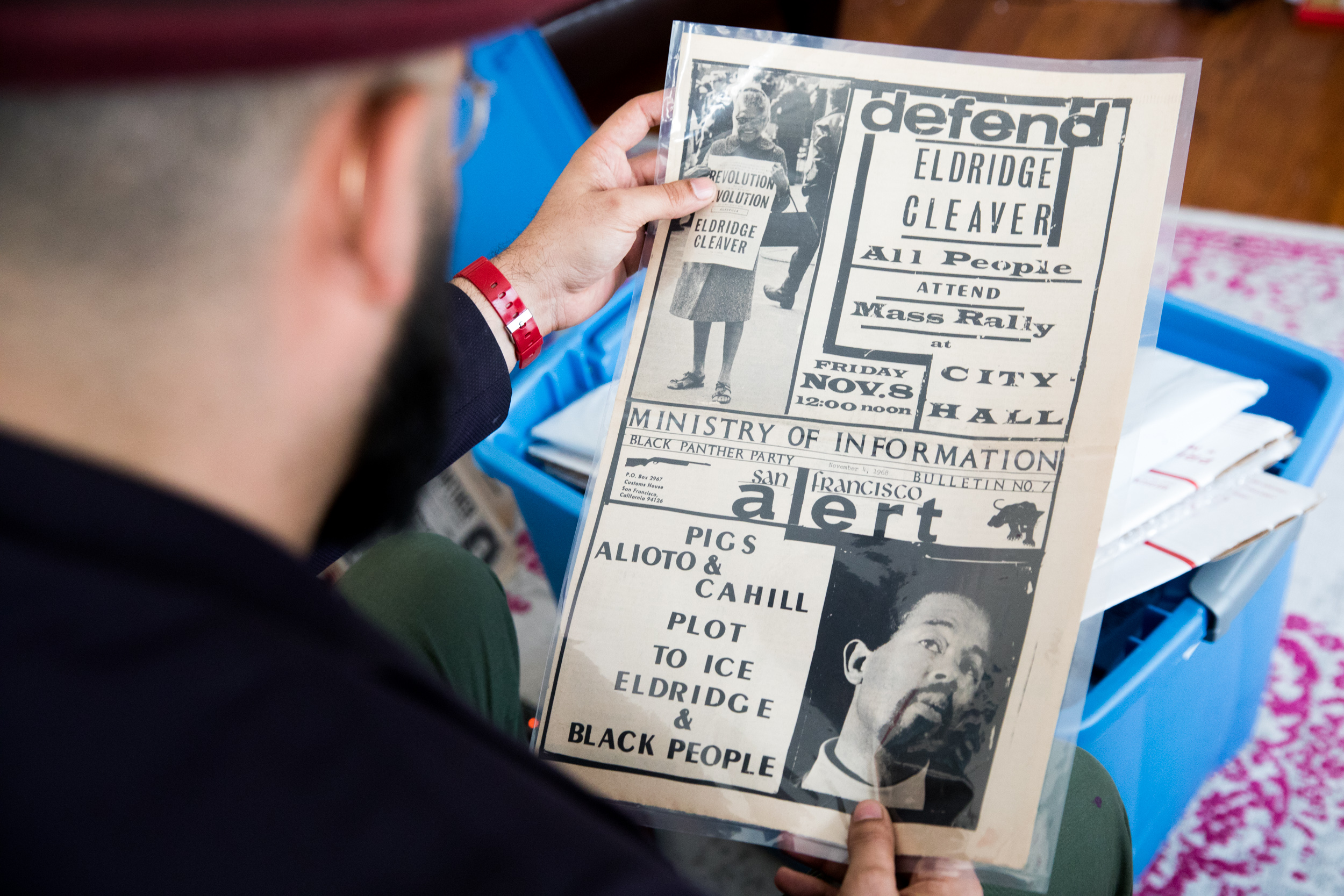
With help from Seattle Public Library, Lindo also hopes to make it even more widely accessible. He is also looking to organize a traveling exhibit of the collection.
“There are very few places [that] give access to the papers,” Lindo says. “There is no place online to get a sense of what their thoughts and analysis were, based on their words. That history is important. It’s part of a necessity to tell the full history,” he says, at home in the cluttered upstairs room in a Beacon Hill house where he currently keeps his newspaper collection.
Lindo looks through the newspaper archives with Elmer Dixon, the former Black Panther.
“I actually made the cover once,” Dixon tells Lindo. “1971.” One by one, Lindo sifts through editions, each neatly covered in plastic, to find the issue that features Dixon. It was a funeral, Dixon specifies, of Sam Napier, the circulation manager of the newspaper, who was killed in New York in 1971. Dixon was one of the Panthers carrying Napier’s coffin out of the church. “Circulate to educate,” Dixon reminisces, quoting Napier.
To the Panthers, the newspaper was not just an educational tool, or merely another arm of the “survival programs” of the party, along with free breakfast, clothing donations, sickle cell anemia and high blood pressure testing, among others.
The newspaper also existed because the Panthers didn’t trust the narrative of mainstream news media, Lindo explains, “because it will, as Malcolm [X] said, make you believe that you are the enemy of yourself.”
In her acclaimed study and book Framing the Black Panthers, mass media historian Jane Rhodes, professor and head of the Department of African American Studies at the University of Illinois-Chicago, researched the Panther’s message and mass media reception and noted the “inclination of the national press to select, highlight, and reinforce the emphasis on guns and the threat of Black masculinity.”
From movies to the news media, the typical Panther image is always the same, tired image, Dixon bemoans: violent, militant, but "nothing about being an articulate revolutionary."
But recent anniversary exhibitions and festivals celebrating the Seattle chapter’s 50th anniversary at the Northwest African American Museum, Langston Hughes Performing Arts Institute and Photographic Center Northwest, plus events in the Bay Area in 2016 celebrating the party’s California founding, have provided more and deeper context. And, Dixon says, educators are starting to dive into the real “meaning and structure” behind the party.
“There are so many people who misunderstand the BPP agenda,” Johnson-Toliver of the Black Heritage Society of Washington State said during a recent phone call. “A library and public access to the papers,” she said, “brings everything all together for folks to be able to research, investigate and create knowledge around some of the humanity that was in the party.”
The newspaper collection, says Dixon, preserves “an important, critical part of American history. To see that [this] time existed and that it’s captured in the pages of these newspapers so that people can actually see and read what we said — not what someone else is interpreting from afar— but what we said, how we articulated revolution in this country, that’s the importance of them.”
